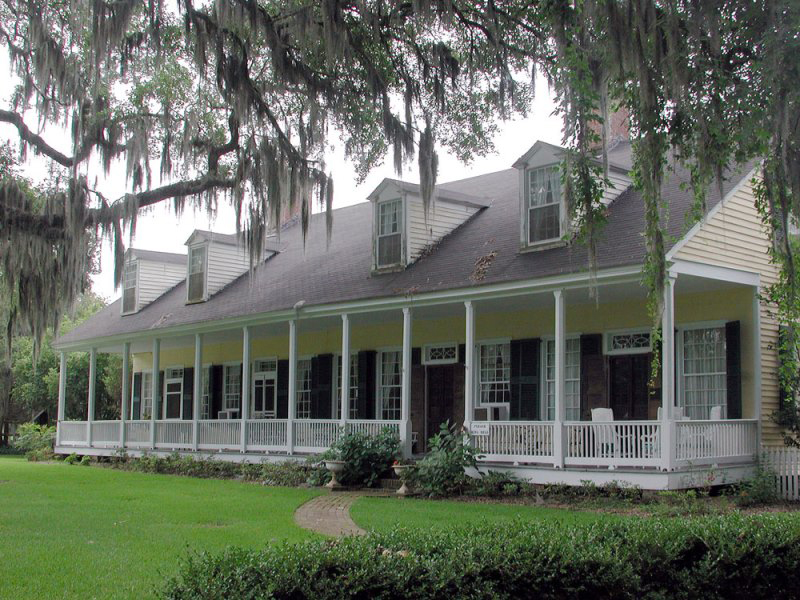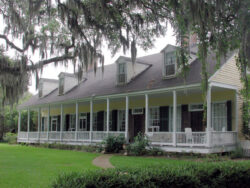Cottage Plantation
Andrew Jackson was entertained at Cottage Plantation while en route to Natchez after the Battle of New Orleans.

Photo by Roderick Eime.
The main house of the Cottage Plantation features four symmetrically placed dormer windows and a gallery that runs the width of the house.
The Cottage Plantation, just north of St. Francisville, is situated at the end of a half-mile-long driveway sheltered by oaks and deciduous trees and across a bridge that spans a creek. The house was constructed in three stages. It began as a one-and-a-half-story house, forty-two feet in length, and was extended in the early 1800s to a length of eighty-five feet and a total of twelve rooms. The two sections are visually integrated by a gallery that extends the full width of the house and by four symmetrically placed dormer windows. A four-room rear wing was added in the 1850s. The entire house is constructed of cypress, with sills of blue poplar.
Its earliest section was built on land granted to John Allen and Patrick Holland by the Spanish government in 1795. Thomas Butler, a lawyer from Pennsylvania, purchased the Cottage Plantation in 1811 and the following year was appointed a parish judge. From 1818 to 1821, he represented Louisiana in the US. Congress. During Butler’s ownership of the Cottage, he entertained Andrew Jackson when he was en route to Natchez after the Battle of New Orleans.
Several of the original dependencies survive in an irregular arrangement behind the main house. These structures include a pair of two-room slave cabins, a two-room building with a central chimney that served as an office and schoolhouse, a milk house for processing cream and butter, a two-room kitchen, a carriage barn, a horse barn, a well house, and two cold frames. At the entrance to the grounds are remnants of the West Feliciana Railroad tracks, on which the cotton from this and other plantations was transported to St. Francisville and the Mississippi River port of Bayou Sara. The Cottage Plantation now offers bed-and-breakfast accommodations.
Adapted from Karen Kingsley’s Buildings of Louisiana, part of the Buildings of the United States series commissioned by the Society of Architectural Historians (www.sah.org) and published by Oxford University Press.
